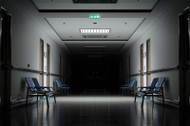Maintained vs Non-Maintained Emergency Lighting?
16th Jul 2024
Emergency lighting is a crucial component of any building's safety plan. But when it comes to emergency lighting, you might encounter terms like "maintained" and "non-maintained." What do these terms mean, and how do they affect your building's safety? Let's dive into the differences between maintained and non-maintained emergency lighting to help you make an informed decision.
Understanding Emergency Lighting
Emergency lighting provides illumination in case of a power outage. This lighting is essential for ensuring that occupants can safely exit a building during an emergency, such as a fire or power failure. There are two main types of emergency lighting systems: maintained and non-maintained.
What is Maintained Emergency Lighting?
Definition
Maintained emergency lights are designed to be operational at all times. This means they work as both regular lighting and emergency lighting. When the main power supply fails, these lights switch to battery power to continue providing illumination.
Benefits
Maintained emergency lights offer several advantages:
- Continuous Illumination: They provide constant lighting, making them ideal for public spaces like theaters and shopping malls.
- Immediate Response: Since they are always on, there is no delay in illumination during an emergency.
- Dual Functionality: They serve as both regular and emergency lighting, eliminating the need for separate systems.
What is Non-Maintained Emergency Lighting?
Definition
Non-maintained emergency lights are designed to activate only during a power failure. These lights remain off under normal conditions and switch on only when the main power supply is interrupted.
Benefits
Non-maintained emergency lights also have their advantages:
- Energy Efficiency: They consume less energy since they are not always on.
- Cost-Effective: They are generally cheaper to install and maintain.
- Targeted Use: Ideal for areas that do not require continuous illumination, such as storage rooms or stairwells.
Key Differences Between Maintained and Non-Maintained Emergency Lighting
Operation Mode
- Maintained Lights: Always on, functioning as both regular and emergency lighting.
- Non-Maintained Lights: Remain off and activate only during a power failure.
Energy Consumption
- Maintained Lights: Higher energy consumption due to continuous operation.
- Non-Maintained Lights: Lower energy consumption as they are off under normal conditions.
Installation and Maintenance Costs
- Maintained Lights: Generally more expensive to install and maintain due to dual functionality.
- Non-Maintained Lights: More cost-effective, both in terms of installation and ongoing maintenance.
Compliance and Standards
Both maintained and non-maintained emergency lighting systems must comply with local and international standards. These standards ensure that the lighting is effective and reliable in case of an emergency.
Key Standards
- BS 5266-1: Code of practice for the emergency lighting of premises.
- EN 1838: Specifies the lighting requirements for emergency escape lighting and standby lighting.
Maintenance of Emergency Lighting
Regular maintenance is essential to ensure that both maintained and non-maintained emergency lights function correctly during an emergency. Here are some key maintenance steps:
Monthly Tests
- Visual Inspection: Check for any visible damage or obstructions.
- Functional Test: Ensure that the lights switch to battery power when the main supply is interrupted.
Annual Tests
- Full Duration Test: Simulate a full power outage to ensure that the lights can run on battery power for the required duration.
- Battery Inspection: Check and replace batteries as needed.
Choosing the Right Emergency Lighting
Selecting the appropriate type of emergency lighting depends on various factors, including the building's layout, occupancy, and specific safety requirements.
Factors to Consider
- Building Type: Public buildings like theaters and malls may benefit more from maintained lighting, while industrial areas might opt for non-maintained lights.
- Occupancy: Areas with high foot traffic may require continuous illumination.
- Budget: Consider the initial installation cost and ongoing maintenance expenses.
Expert Consultation
Consulting with a lighting specialist can provide valuable insights into the best emergency lighting system for your specific needs.
Understanding the differences between maintained and non-maintained emergency lighting is essential for ensuring the safety and compliance of your building. Maintained lights offer continuous illumination and immediate response, making them ideal for public spaces. Non-maintained lights, on the other hand, are energy-efficient and cost-effective, suitable for areas that do not require constant lighting.
Regardless of the type you choose, regular maintenance is crucial to ensure that the lights function correctly during an emergency. By considering factors like building type, occupancy, and budget, you can select the best emergency lighting system to keep your occupants safe.

 UK's #1 Specialist LED Retailer
UK's #1 Specialist LED Retailer
 Free Delivery Orders Over £50
Free Delivery Orders Over £50
 28 Day Returns Quality Guarantee
28 Day Returns Quality Guarantee

